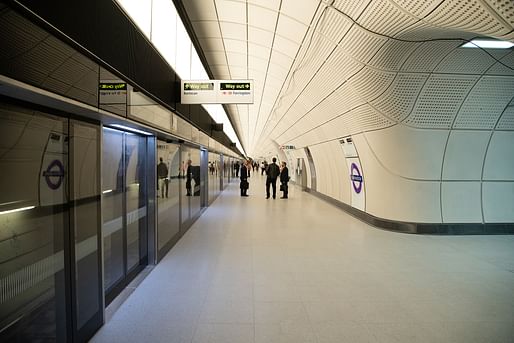

This megalopolis of engineering currently lies there, pristine, unspotted by gum or pigeon, with its 319-tonne trains gliding quietly through every few minutes, empty, so that those operating the system can familiarise themselves with the choreography of all that heavy metal. Electronic indicator boards announce their coming with white digits, a notch classier than the orange ones on the old tube. — The Guardian
Moore described the nearly empty £18.33 billion ($23.84 billion) project as an “alternative universe” before likening the transition between the new Elizabeth line and older Central Underground to a scene from (attempted architecture critic) Lewis Caroll’s Alice in Wonderland.
The full line is expected to be complete by 2023. Hopes were for the originally planned construction to end in 2018, before being pushed back three separate times owing to the pandemic and a variety of other causes. The expansion will eventually feature a motley slate of new stations from Hawkins\Brown and other big-name firms, but Moore doesn’t expect the enormous feat to be repeated any time soon, given the rise of certain ascendant technologies in the role of city planning.
“It can take a generation, in other words, to make something such as this happen. Since we are in a climate emergency, whatever environmental benefits may come from further such splurges on public transport – which incur upfront carbon and energy costs in their construction – may now come too late. Some gurus of mobility argue that driverless electric cars, by using road space efficiently and removing the environmental problems of petrol and diesel, will eventually push urban railways towards obsolescence.”
1 Comment
What do driverless cars offer that can't be integrated into rail with less of a payday for vulture capitalists?
Block this user
Are you sure you want to block this user and hide all related comments throughout the site?
Archinect
This is your first comment on Archinect. Your comment will be visible once approved.